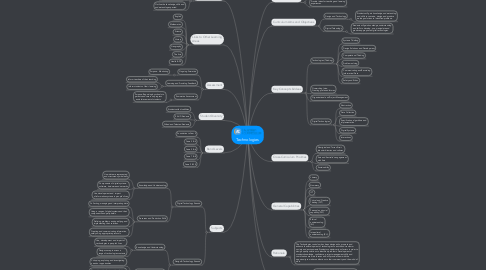
1. Content Descriptions
1.1. CDs tell teachers what they are expected to teach and the students what they are to learn.
1.2. Specific to each Year Level
1.3. Outline the knowledge, skills and understanding expected
2. Content Elaborations
2.1. Expand the CDs
2.2. Provide ideas for teaching and learning experiences
3. Curriculum Aims and Objectives
3.1. Design and Technology
3.1.1. Students will gain knowledge, understanding and skills to conceive, design and produce working solutions to identified problems.
3.2. Digital Technology
3.2.1. Students will gain knowledge, understanding and skills to develop, use, manipulate and produce appropriate digital technologies.
4. Cross-Curriculum Priorities
4.1. Aboriginal and Torres Strait Islander histories and cultures
4.2. Asia and Australia’s engagement with Asia
4.3. Sustainability
5. General Capabilities
5.1. Literacy
5.2. Numeracy
5.3. ICT
5.4. Critical and Creative Thinking (CCT)
5.5. Personal and social capability (PSC)
5.6. Ethical understanding (EU)
5.7. Intercultural understanding (ICU).
6. Key Concepts & Ideas
6.1. Technologies (Thinking)
6.1.1. Systems Thinking
6.1.2. Design Solutions and Development
6.1.3. Computational Thinking
6.1.4. Problem-solving
6.1.5. Communicating and Recording Information/Data
6.1.6. Safety and Ethics
6.2. Overarching Idea: Creating preferred futures
6.3. Organisational and Project Management
6.4. Digital Technologies
6.4.1. Abstraction
6.4.2. Data Collection
6.4.3. Specification, algorithms and implementation
6.4.4. Digital Systems
6.4.5. Interactions
7. Links to Other Learning Areas
7.1. English
7.2. Mathematics
7.3. Science
7.4. History
7.5. Geography
7.6. The Arts
7.7. Health & PE
8. Assessment
8.1. Ongoing Formative
8.1.1. Purpose: Monitoring
8.2. Learning and Providing Feedback
8.2.1. Inform teachers of their teaching
8.2.2. Inform students of their learning
8.3. Summative Assessment
8.3.1. Purpose: Reporting by schools to parents and carers on progress and achievement of students
9. Rationale
9.1. The Technologies curriculum has been designed to promote and enhance the development of technologies to enrich and transform society and environments. Students consider various factors in order to design quality solutions to identified problems. Development of students knowledge, confidence, project management skills and coordination are main focuses and will provide them with the opportunity to make contributions to their community and the world of work.
10. Student Diversity
10.1. Students with disabilities
10.2. EAL/D Students
10.3. Gifted and Talented Students
11. Band Levels
11.1. Foundation to Year 2
11.2. Years 3 & 4
11.3. Years 5 & 6
11.4. Years 7 & 8
11.5. Years 9 & 10
12. Achievement Standards
12.1. Provide an overview/indication of where the students learning should be by the end of each band level
13. Subjects
13.1. Digital Technology Strands
13.1.1. Knowledge and Understanding
13.1.1.1. How data are represented and structured symbolically
13.1.1.2. Components of digital systems: software, hardware and networks
13.1.1.3. Use, development and impact of information systems in people’s lives
13.1.2. Processes and Production Skills
13.1.2.1. Collecting, managing and interpreting data
13.1.2.2. Using a range of digital systems and their components and peripherals
13.1.2.3. Defining problems and specifying and implementing their solutions
13.1.2.4. Creating and communicating information, safely using appropriate protocols
13.2. Design & Technology Strands
13.2.1. Knowledge and Understanding
13.2.1.1. Use, development and impact of technologies in people’s lives
13.2.1.2. Design concepts across a range of technologies contexts
13.2.2. Processes and Production Skills
13.2.2.1. Critiquing, exploring and investigating needs or opportunities
13.2.2.2. Generating, developing and evaluating design ideas for designed solutions
13.2.2.3. Planning, producing and evaluating designed solutions
